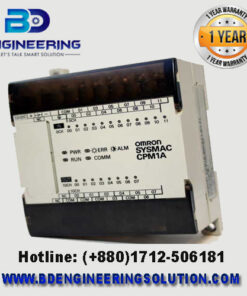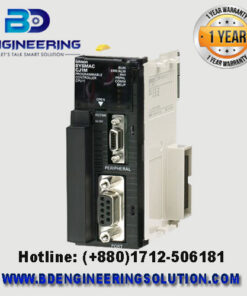ABB AC500 PLC PM573-ETH 1SAP130300R0271
The ABB AC500 PLC PM573-ETH (part number 1SAP130300R0271) is a powerful and versatile programmable logic controller (PLC) designed for complex industrial automation applications. It offers robust performance, extensive communication capabilities, and high reliability.
ABB AC500 PM573-ETH PLC:
- CPU Technical data: Equipped with a powerful processor for fast and reliable execution of control tasks. Ample memory for storing programs and data, ensuring efficient handling of complex applications.
- Ethernet Port: Built-In Ethernet Port: Enables seamless integration into modern industrial networks, supporting protocols like Modbus TCP, Ethernet/IP, and Profinet.
- Modular Design: The modular design allows easy expansion with additional I/O modules, communication modules, and function modules to meet specific application requirements. Space-saving design suitable for various control cabinet sizes.
- Flexible Programming: Including Ladder Diagram (LD), Function Block Diagram (FBD), Structured Text (ST), Instruction List (IL), and Sequential Function Chart (SFC). Compatible with ABB’s Automation Builder software for programming, configuration, and diagnostics.
- Special Features: Real-Time Clock: Built-in real-time clock for time-stamped data logging and scheduling tasks.
Specifications:
- CPU: ARM Cortex-A8, 600 MHz
- Memory: 512 KB user program memory, 256 KB data memory, 16 MB Flash memory
- Power Supply: 24 V DC
- I/O Capacity: Supports up to 10 local I/O modules
- Communication Ports: 1 x Ethernet, 1 x RS-485, 1 x RS-232
Installation and Setup:
- DIN Rail Mounting: Securely mount the PM573-ETH on a standard DIN rail within the control cabinet.
- Connect the 24 V DC power supply to the appropriate terminals on the PLC.
- Communication Ports: Connect Ethernet cables to the Ethernet port for network integration. Use RS-485 and RS-232 ports for additional communication needs.
- I/O Modules: Connect I/O modules to the PLC base unit as required, ensuring correct alignment and secure connections.
- Visual Checks: Periodically inspect the PLC and its connections for signs of wear, damage, or overheating.
- Status LEDs: Monitor the status LEDs for indications of errors or faults.
- Regularly check for and install firmware updates to ensure the PLC has the latest features and improvements.






